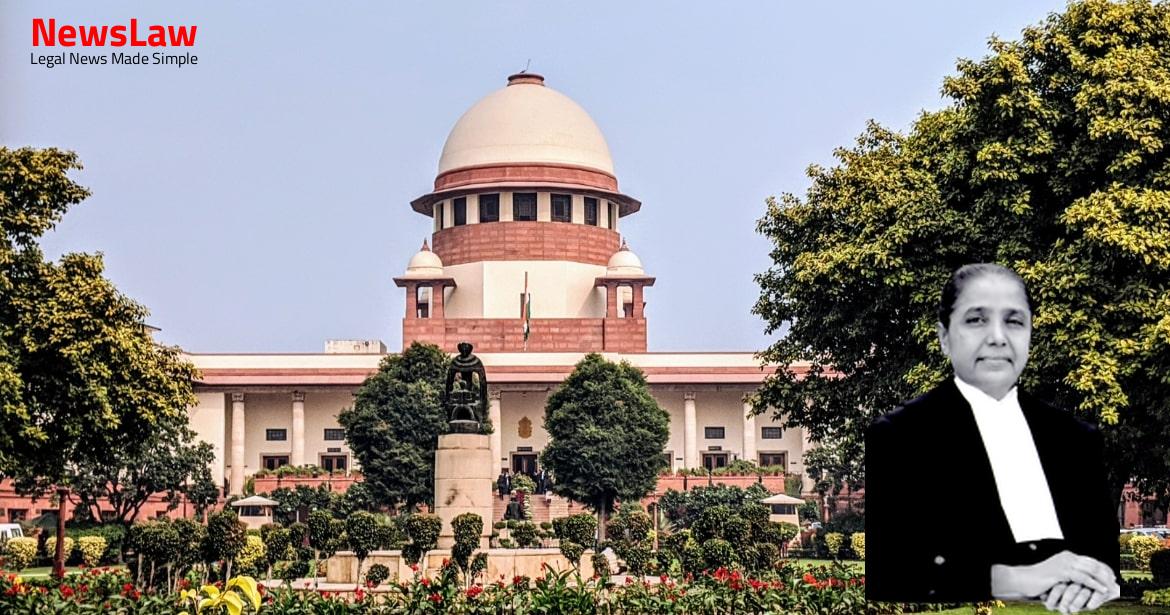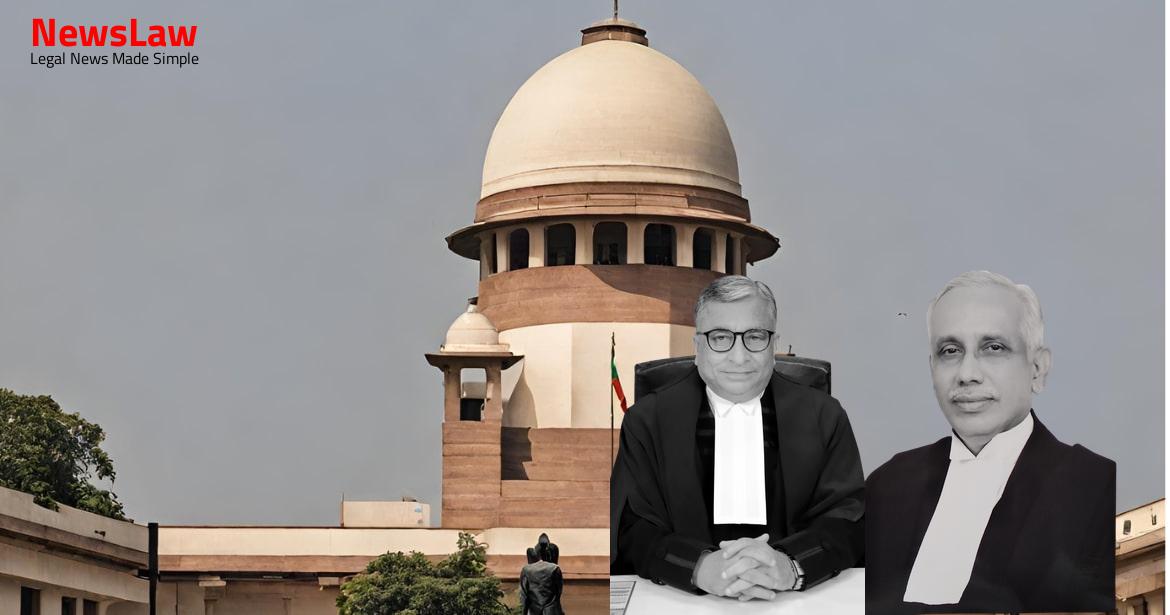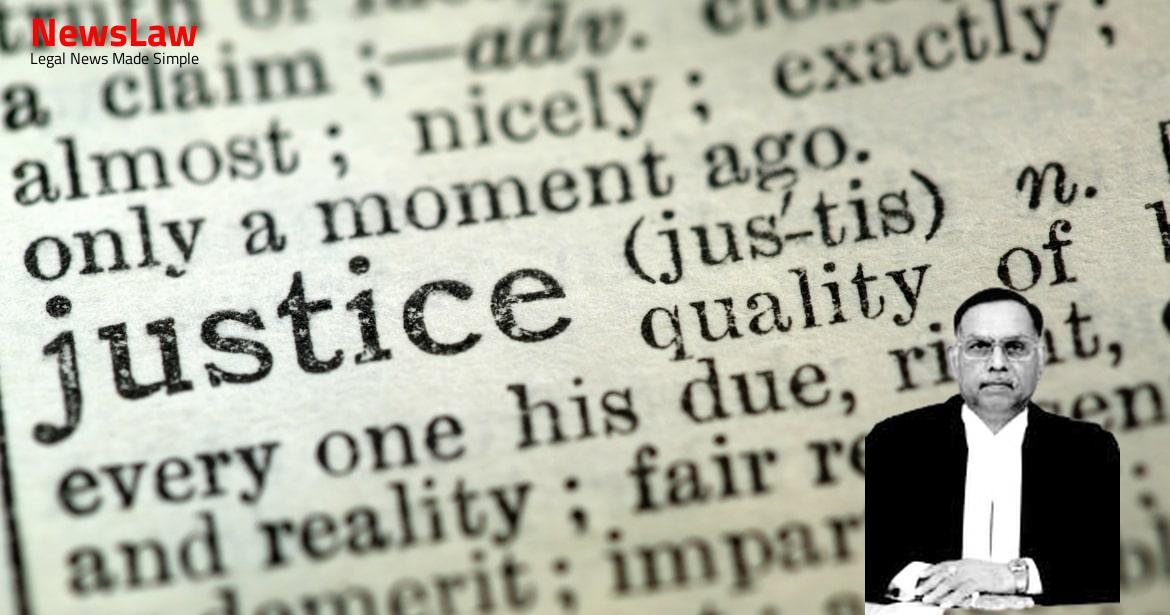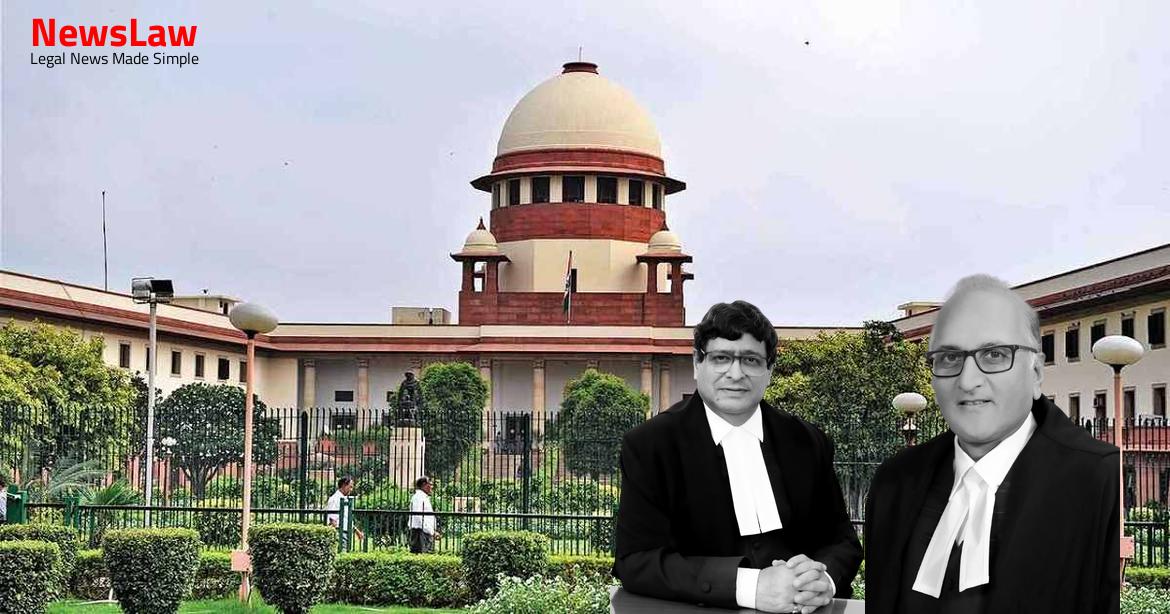Delve into the High Court acquittal case involving the State of Uttar Pradesh and Jai Prakash. The Supreme Court’s meticulous examination of the evidence presented sheds light on the complexities of legal proceedings and the standards for establishing guilt beyond reasonable doubt.
Facts
- On 17.11.1992, the dead body of Ravi Prakash was sent for post-mortem examination.
- Post-mortem revealed multiple firearm lacerated wounds on the deceased.
- Eye witnesses noted the presence of accused persons with arms at the scene of the crime.
- Motive for the crime was attributed to previous enmity involving accused Bhupendra Yadav.
- Accused Bhupendra Yadav, Raju Teli, and Lallu fired at the deceased during the incident.
- Total six witnesses were examined including eye witnesses, doctor, and investigating officer.
- Accused denied the charges and pleaded not guilty.
- Charge sheet was filed against all four accused under relevant sections of the IPC.
- Appellant lodged a complaint regarding the incident at Police Station Rath.
- Samples and items from the scene of occurrence were collected for investigation.
- Trial court convicted accused Nos.1, 2 and 4 based on evidence of eye witness PW-1 and PW-3, sentencing them to life imprisonment.
- High Court doubted the presence of PW-3 at the time of the occurrence, reversing the conviction of accused Nos.1, 2 and 4.
- High Court held that non-examination of independent witnesses due to fear would not affect the prosecution case.
- Medical evidence corroborated the testimonies of PWs 1 and 3 according to the trial court.
- Accused No.3, Shankar Teli, was acquitted by the trial court due to the benefit of doubt.
- Accused Nos.1, 2 and 4 filed appeals challenging their conviction, leading to the High Court setting aside their conviction and acquitting them.
Also Read: Judgment Review: Supreme Court’s Ruling on the Capital Punishment Appeal
Arguments
- PW-1’s detailed account of the incident is corroborated by PW-3’s evidence.
- High Court found PW-3’s presence during the incident at PW-1’s house unnatural.
- Discrepancies between oral evidence and Post-Mortem Report were not explained adequately.
- Trial court’s finding on general public being reluctant to testify was noted.
- Non-examination of independent witnesses and the scribe of the complaint was considered by the High Court.
- Lapses in investigation like not sending blood-stained earth and non-recovery of ’empties’ were discussed.
- Accused No.2’s counsel pointed out the lack of motive for attacking Ravi Prakash.
- Presence of PW-3 at the scene was deemed improbable by the defense.
- Accused No.4’s counsel criticized PW-1’s behavior during the incident.
- The multiple bruises found on the body of the deceased have not been properly explained by the prosecution.
- Contradictions between the evidence of Prosecution Witnesses 1 and 3 regarding the scuffle prior to the incident were highlighted by the defense counsel.
- Absence of recovery of firearms or cartridge empties from the place of occurrence and lack of ballistic opinion to link the injuries on the deceased to the alleged firearms used by the accused raised doubts on the prosecution’s case.
Also Read: The Ruias v. MHL: Landmark Supreme Court Judgement
Analysis
- The High Court analyzed the entire evidence and found material inconsistencies in the prosecution case.
- The findings of the High Court in acquitting Jai Prakash, Ravi Prakash, and the State of Uttar Pradesh do not have any infirmity requiring interference.
- The appeals filed by the complainant and the State of Uttar Pradesh are to be dismissed.
- The judgment passed by the High Court on November 16, 2018, in Criminal Appeal Nos. 2403 and 5829 of 2005 is affirmed.
- Criminal appeals arising out of SLP(Crl.) Nos. 269-70 of 2019 filed by Jai Prakash and criminal appeals arising out of SLP(Crl.) Nos. 288-89 of 2019 filed by the State of Uttar Pradesh are dismissed.
- The investigation immediately commenced after the occurrence, yet the ’empties’ and ‘bursts’ from the scene were not recovered, raising doubts.
- Inconsistencies in the version of witnesses as to whether there was a scuffle are not explained, further casting doubt on the prosecution case.
- Exercise of power under Article 136 of the Constitution of India
- The case of State of Uttar Pradesh v. Punni and others (2008) 11 SCS 153
- Supreme Court’s approach to orders of acquittal by the High Court
- Supreme Court’s reluctance to interfere unless specific conditions are met
- Conditions for interference: glaring infirmity in the appraisement of evidence, perversity, or arbitrariness
Also Read: Judgement on Arbitrator Appointment Dispute: Clauses 64(3)(a)(ii) and 64(3)(b)
Case Title: JAI PRAKASH Vs. THE STATE OF UTTAR PRADESH
Case Number: Crl.A. No.-001790-001791 / 2019



